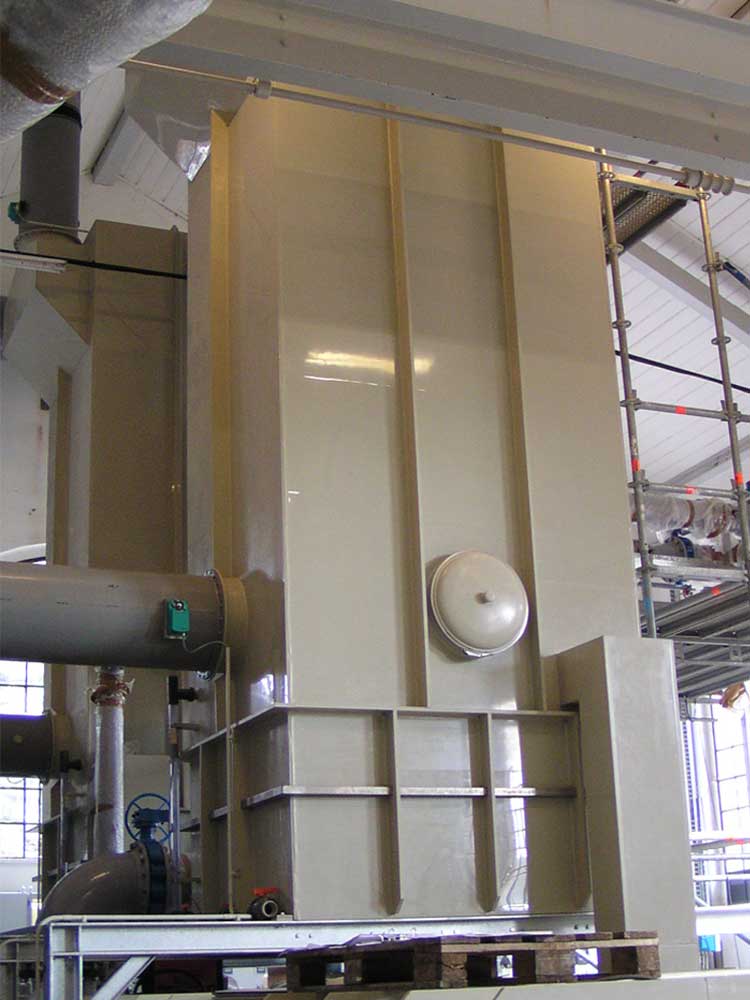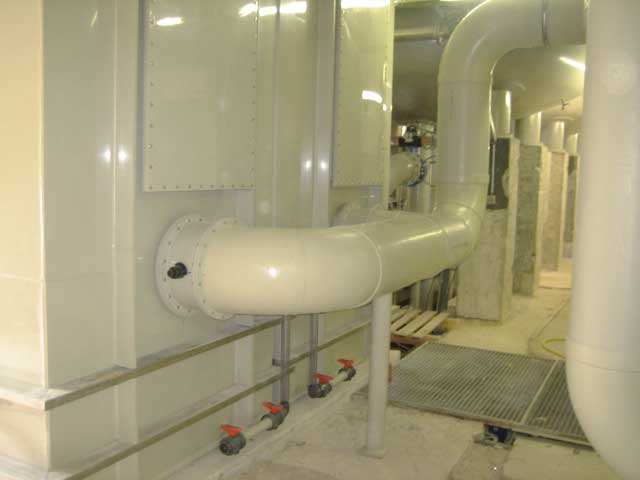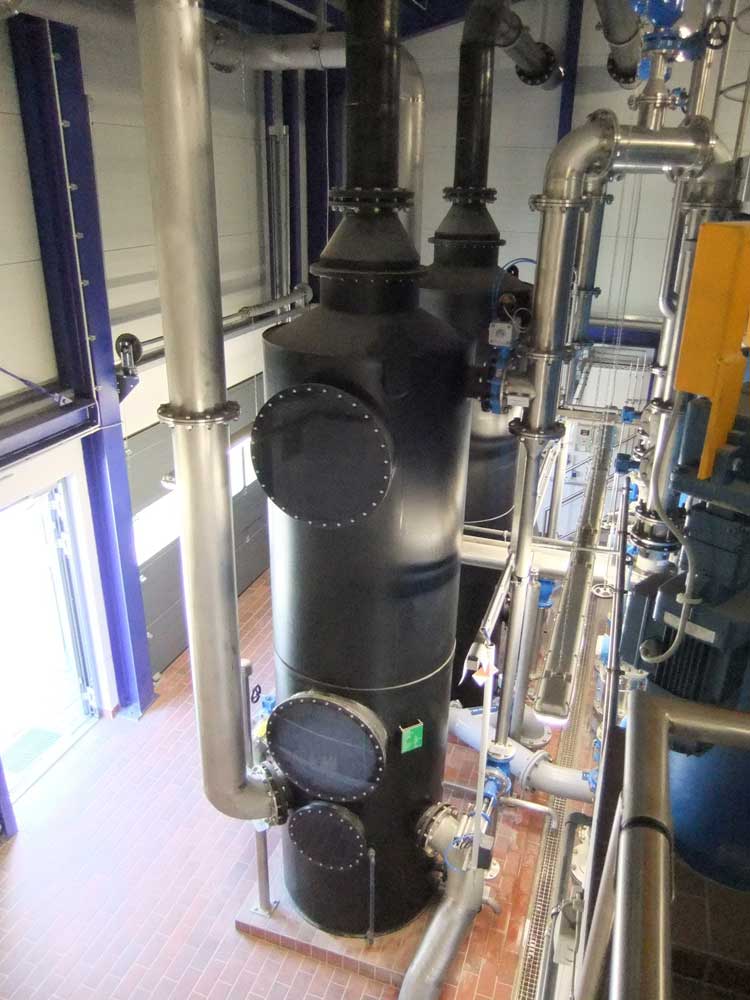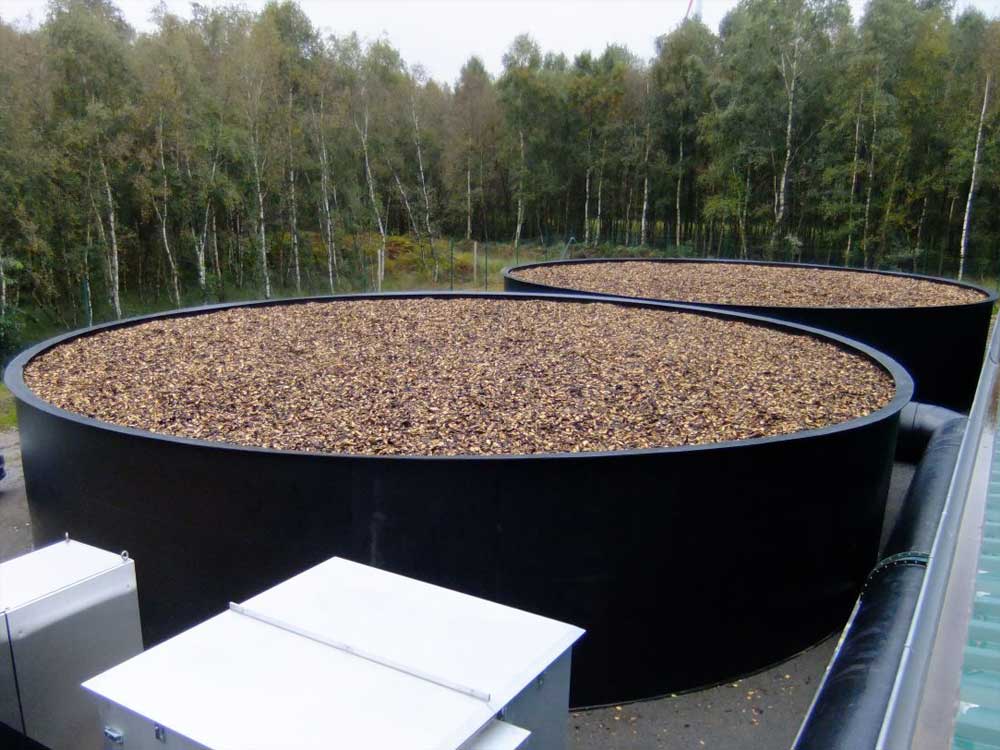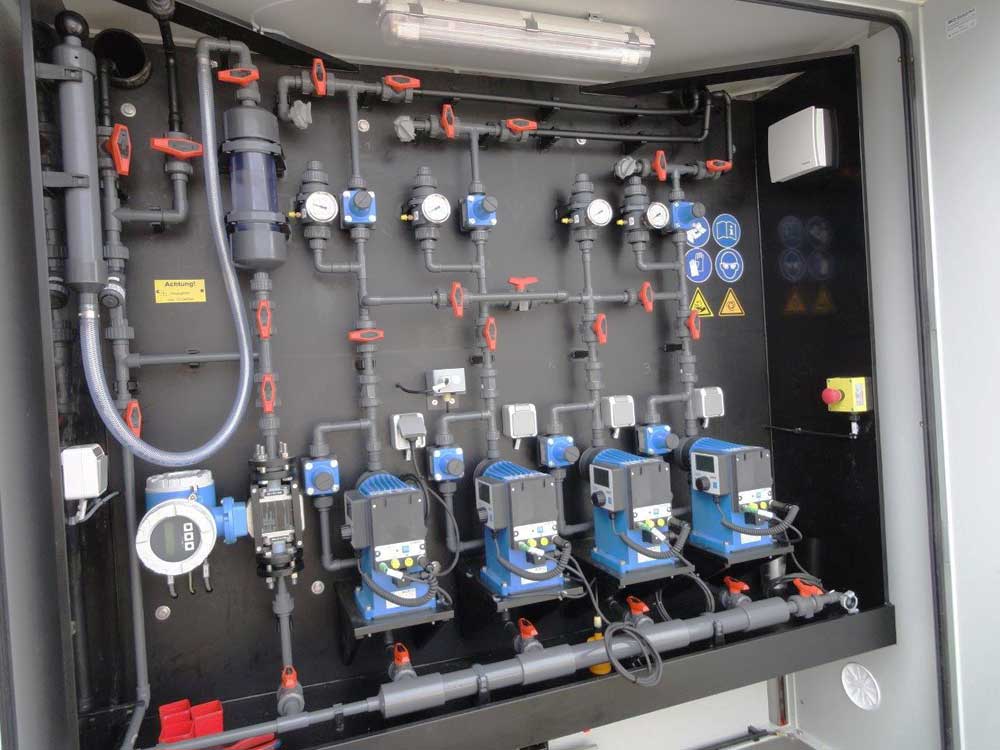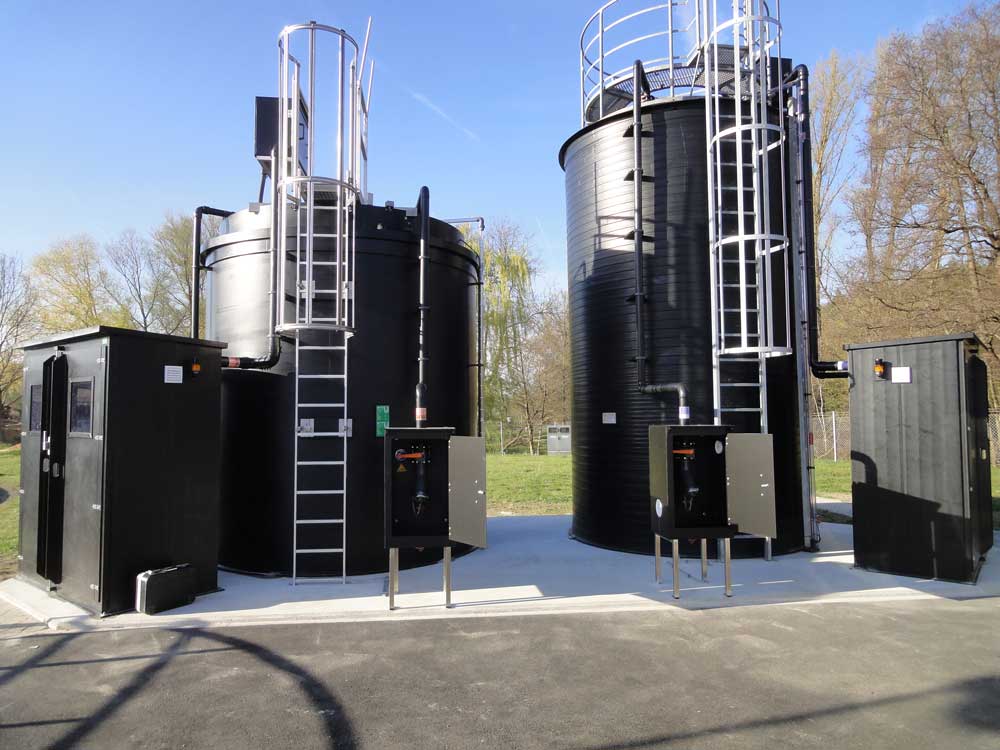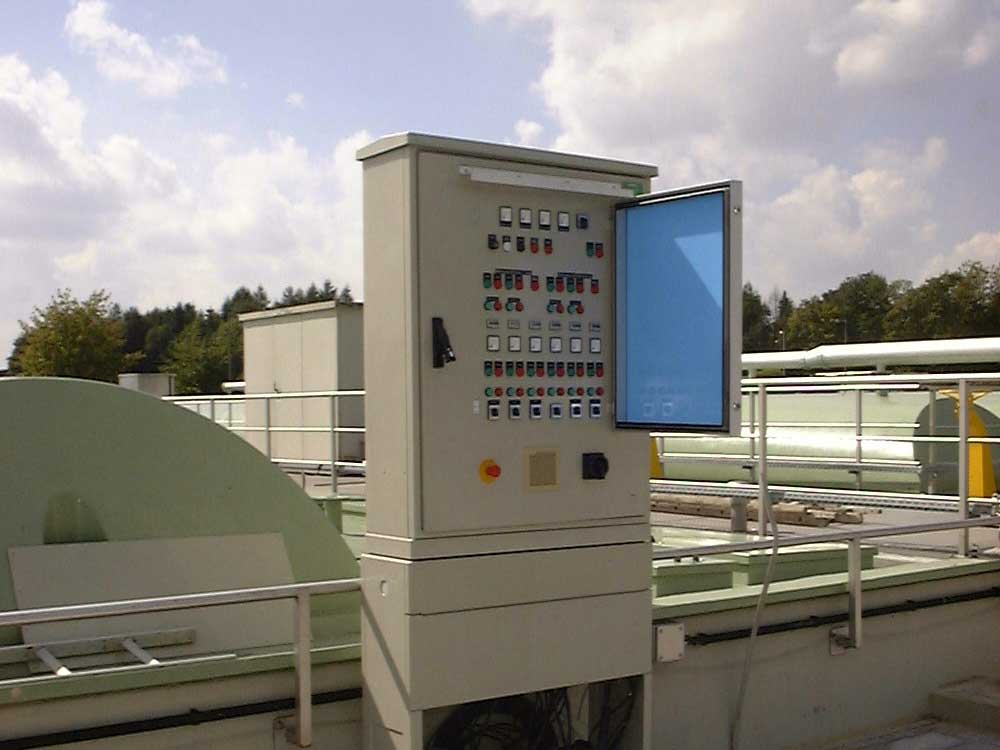Strip desorption systems
The stripping or desorption process is an established and reliable process for which Likusta offers systems for drinking-water treatment or groundwater treatment. According to the principle of desorption, pollutants are separated from contaminated water and transferred into the gas phase. Depending on the application, gas treatment then follows with an activated carbon filter.
Online-Request